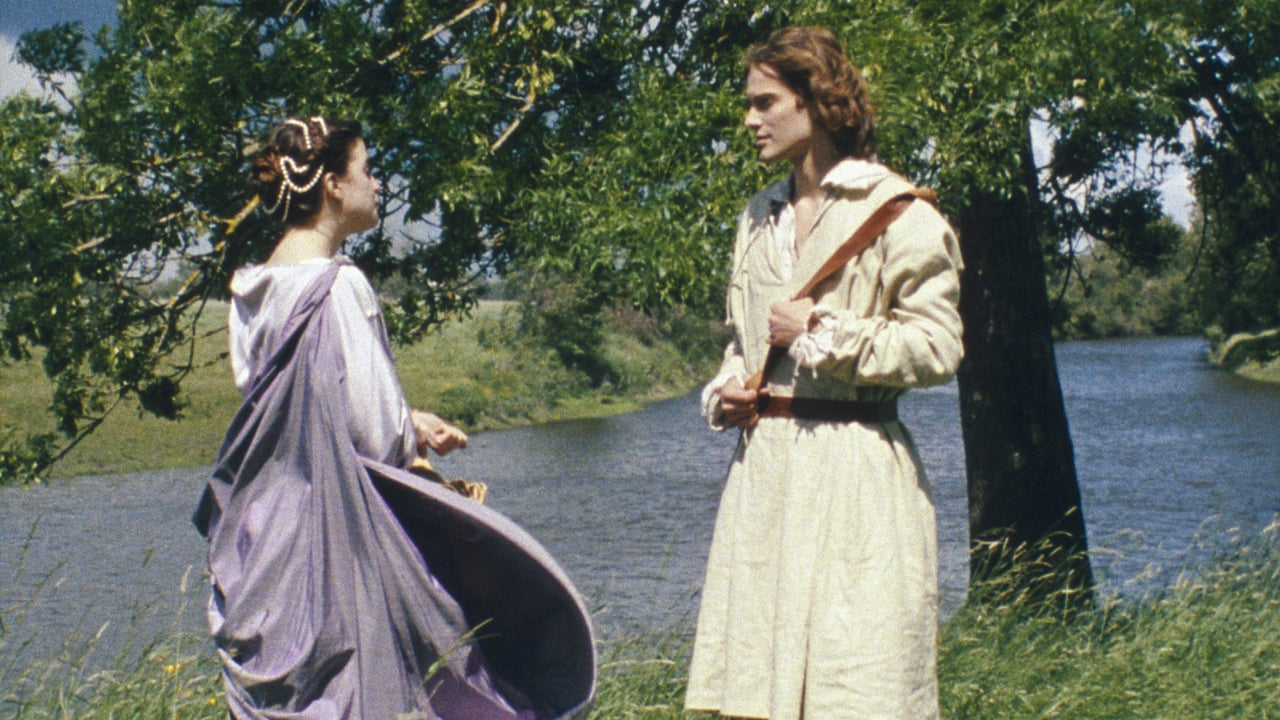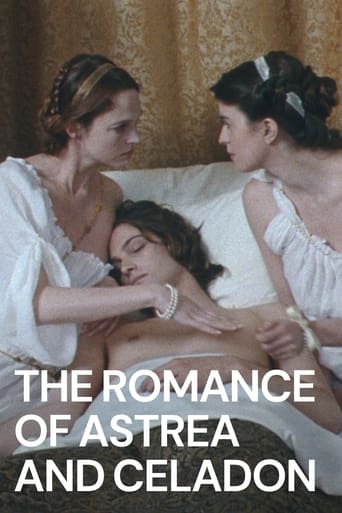



Don't listen to the negative reviews
I am only giving this movie a 1 for the great cast, though I can't imagine what any of them were thinking. This movie was horrible
View MoreAs somebody who had not heard any of this before, it became a curious phenomenon to sit and watch a film and slowly have the realities begin to click into place.
View MoreThere's a more than satisfactory amount of boom-boom in the movie's trim running time.
View MoreI had a bad time with the last medieval-set film from Eric Rohmer, Perceval le Gallois, generally because it was shot on sets and I found Fabrice Luchini as Perceval incredibly annoying. Having an interest in the literature of the time I was uncomfortable with the portrayal.So I came to this one with misgivings, but fortunately it allowed some of the source material to breathe. The film is based on a 17th century novel called L'Astrée by Honoré d'Urfé. It is set in 5th Century France and is a romantic fantasy of the times. It seems that all characters are either shepherds, shepherdesses, nymphs or druids. I feel that Rohmer's style is quite inflexible, he shot this movie in squarish 4:3, as usual, whereas I felt the languor of the material, the playful Arcadian tone, the respect for the landscape (that Rohmer professes at the start of the film) required a more horizontal treatment of 2.35:1. Full-screen is what Rohmer typically uses and is good for his conversational films, or portraiture if you will. Here the material begs for something different, think for example of the British romantic painters William Etty and Lord Leighton, of Leighton's The Daphnephoria, Etty's The World Before The Flood, long sensual paintings. Rohmer does however try his best to find scenes that look best under 4:3, for example when Astrea takes her flock to high pasture up a steep meadow, there's no other way the scene should be filmed, it's more a case of Rohmer fitting the world to his aspect ratio though. I think that what works best for Rohmer in nearly all of his other films was a weakness here, the spartan conversational style.Celadon is a prince who has decided to live as a shepherd, having presciently followed Voltaire's advice that working the land is the key to happiness. He is loved by Astrea, a shepherdess. A tragic miscommunication between the two leads to their separation and peregrinations. Along the way we are treated to the usual Rohmerian banter about how love can't be forced, elective affinities, and the rationalisations and sophistries of love that each of the characters own. The main chat is between Hylas and Lycidas. Hylas is the equivalent of the bumble bee, he believes that men are meant to flit like bees from flower to flower, he is a joyful larger-than-life character. Lycidas on the other hand believes in monogamous love (with his beloved Phillis), a fusion of souls and both openly scorn the other, though Lycidas comes off as dour. I'm not convinced the philosophical material is a move forward from his earlier movies such as Pauline a la Plage, but it certainly is presented here with enough charm.The source material is well over 5000 pages long and obviously here we have a massive condensation. You can sense this quite often, for example when Celadon contemplates a painting of Psyche dripping hot wax on the sleeping Cupid. The painting is loaded with context, it's describing a scene from Apuleius' The Golden Ass, the only fully-surviving Latin novel, the whole episode is a rich and dense allegory regarding Platonism and different types of love, it's just skipped over here.The movie definitely is a pleasure to watch for me, despite the extravagance that the tale yearns to be told with, and which is barely present here. I don't think there is any director alive, or any budget that would see full justice done to the story, I think Rohmer succeeded as much as can be expected.
View MoreRohmer has made great films so if he makes a strange or apparently bad film it's wiser to check if it's our expectations that are at fault, not the film. Celadon & Astrae is an odd film and I don't think it's a great film, but I don't think it's a bad one. It has conventions- as all films do- but they aren't conventional conventions so it takes time to adjust to them but it is worth adjusting and accepting the preposterous plot, the formal archaic language and the absurd psychology. There's actually a very Rohmeric film here with beautiful fluid filming and a Rohmeric concern with morality and the actors aren't trapped by the conventions they must act in: Astrea and Celadon's sorrows and joys may be conventional and absurd objectively but they are still moving and the debates are absurd in form but relevant in subject.
View MoreCanadians are too polite to boo but the audience at the Toronto Film Festival left the theater muttering that they would rate this film 0 or 1 on their voting sheets. The premise is that a modern filmmaker is interpreting a 17th century fable about the loves of shepherds and shepherdesses set in the distant past when Druids were the spiritual leaders. Working in three epochs presents many opportunities to introduce anachronisms including silly and impractical clothing and peculiar spiritual rites that involve really bad poetry. Lovers are divided by jealousy and their rigid adherence to idiotic codes of conduct from which cross-dressing and assorted farcical situations arise. The film could have been hilarious as a Monty Python piece, which it too closely resembles, but Rohmer's effort falls very flat. The audience laughed at the sight jokes but otherwise bemoaned the slow pace. The ending comes all in a rush and is truly awful. This is a trivial film and a waste of your movie going time.
View MoreI was aware of Rohmer's admiration for the late works of the ones he considered like great cineasts, and that normal spectators generally considered as artistic failures (as Renoir's or Chaplin's very last movies ; yes, the "politique des auteurs" also has its dark side). But with "Les amours d'Astrée et de Céladon", it's as if Rohmer himself wanted, for what may be his last movie, to perpetuate this tradition of great directors, who made a last senile movie, by adapting Urfé's "L'astrée", with ridiculous aesthetic codes, witch just look like a parody of Rosselini's last movies (the ones he made for TV from Descartes or Marx's lives).In his version of "Perceval", Rohmer refused to film real landscapes in order to give a re-transcription of what may have been a middle age classical representation of things. The director apparently changed his mind when the XVII century is involved, and films actors, dressed like 1600's peasants reciting their antic text surrounded by contemporary trees and landscapes. But the all thing looks even more ridiculous than Luchini and its fake trees. It's not that the story itself is stupid, but the way Rohmer mixes naturalism with artifices seems so childish and amateurism that it rapidly becomes involuntarily funny (and I'm not even talking about the irritating pronunciation of the actors, the annoying and sad humorist tries by Rodolphe Pauly, the ridiculous soft-erotic tone, the poor musical tentatives, or the strange fascination for trasvestisment!).The radical aesthetic of the film ultimately makes it looks like a joke, which mixes a soft-erotic movie made for TV with theological scholastic discussions (sic !). At the beginning of the movie, Rohmer teaches us that the original french region of the story is now disfigured by modernity, and that's why he had to film "L'Astrée" in other parts of the country. However, I'm sure the movie would have look more modern and interesting, if Rohmer would have actually still filmed the same story in a modern area with same narrative codes and artistically decisions. This film may interest a few historians, but most of the cinephiles may laugh at this last and sad Rohmer's movie.
View More